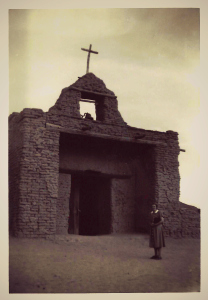 Not long ago, all I knew of the agave plant was the printed picture on bottles of tequila. We’ve had a few of those in my kitchen, and the subtleties of varieties is akin to appreciating the nuanced differences in a bottle of wine.
Not long ago, all I knew of the agave plant was the printed picture on bottles of tequila. We’ve had a few of those in my kitchen, and the subtleties of varieties is akin to appreciating the nuanced differences in a bottle of wine.
I also believed the tale that the Century Plant was so named because it bloomed only once every one hundred years. At least one part is true: it blooms only once before it dies, but for this versatile plant, a single bloom has multi-use potential.
Aztec Fruit
The Aztecs harvested agave and enjoyed a beverage called pulque. This was alcoholically weak, possibly like beer, and was used for religious and/or medicinal purposes. Colonial Spaniards concocted a much stronger brew. Which brings me to…
When making margaritas, my husband is a purist. Three ingredients of equal measure: tequila, lime juice, and orange liqueur. Shake with ice and enjoy on hot summer evenings (or any time of year!).
Versatile Plant
Also called maguey, the century plant, or agave, has been used extensively for centuries.
The stalk, which when it arrives can grow as much as twelve inches a day and soar as high as forty feet, was often used to make fence posts.
 The plants tough fibers were used to make thread or twine.
The plants tough fibers were used to make thread or twine.
Agave syrup is sweeter than honey. I like it poured over my homemade plain yogurt sprinkled with black walnuts. Yum! Or, for a healthy sweet treat, try boiling carrot slices and dressing them with agave syrup and cinnamon.
Steamed agave flowers, young, tender, and mixed with herbs, are nutritious. So are agave seeds!
And the hearts of the plant, usually roasted for at least two days, can be a tender addition to dinner.
What Else?
Bows, baskets, fiber for clothes… including using the thorns to makes needles! 
A Few More…
The dried leaves can be smoked like tobacco.
Fermented, the sap can be made into vinegar.
Or, leaf extract lathered and used like soap.
And if you can find them, maguey leaves can be parboiled, wrapped around meat, and placed into a slow cooker for at least eight hours. Drop some roasted green chiles and pulled beef into a warm tortilla—the result is melt in your mouth magic!
Mission Connection
Finally, Miguel del Barco, a Jesuit priest who served at Mission San Javier in the Sierra de la Giganta (mountain range in Baja California Sur) between 1738 and 1768 documented, among other things, the native peoples’ use of agave. His book is still available: The Natural History of Baja California
There is a lot to say about the versatile agave, but why listen to me when you can watch the movie?
Now if you’ll excuse me, my husband is mixing something up in the kitchen. I think he needs my help!






 Vogue. Not the magazine, but vogue as in something popular, and in this case … hidden. Ancient, yet new.
Vogue. Not the magazine, but vogue as in something popular, and in this case … hidden. Ancient, yet new. I measure the passing of time by seasons; whether there’s snow in the forecast or flowers in the garden. My husband, on the other hand, judges time by the game: football, basketball, baseball … but he would be at a loss to explain Ulama, an ancient Mesoamerican ball game played by the Aztecs and Mayans.
I measure the passing of time by seasons; whether there’s snow in the forecast or flowers in the garden. My husband, on the other hand, judges time by the game: football, basketball, baseball … but he would be at a loss to explain Ulama, an ancient Mesoamerican ball game played by the Aztecs and Mayans.

 A shopping mall is my area has a Catholic bookstore, so I went inside to see what they had in their fiction section. I passed by a lot of plastic trinkets probably made by Chinese Buddhists, and the usual jewelry, rosaries, crosses, baptisms and confirmation gifts, etc. on my way to the books. There I found nonfiction titles on parenting, apologetics, vocations, liturgy, and the like. But I couldn’t find any fiction.
A shopping mall is my area has a Catholic bookstore, so I went inside to see what they had in their fiction section. I passed by a lot of plastic trinkets probably made by Chinese Buddhists, and the usual jewelry, rosaries, crosses, baptisms and confirmation gifts, etc. on my way to the books. There I found nonfiction titles on parenting, apologetics, vocations, liturgy, and the like. But I couldn’t find any fiction.
 A few months back, I was in Santa Fe for a cooking class. Since the class didn’t begin until the next day, my husband and I dined at a local restaurant, which shall remain nameless for a reason you will soon learn. Santa Fe, if you are unaware, is a food lover’s fantasty. (No, that is not a typo. I am a fan of the tasty food, and since no word can adequately express my delight with New Mexican cuisine, I made one up!)
A few months back, I was in Santa Fe for a cooking class. Since the class didn’t begin until the next day, my husband and I dined at a local restaurant, which shall remain nameless for a reason you will soon learn. Santa Fe, if you are unaware, is a food lover’s fantasty. (No, that is not a typo. I am a fan of the tasty food, and since no word can adequately express my delight with New Mexican cuisine, I made one up!) We spent the next two hours cleaning broken glass from the car seats and taping a garbage bag to the window until we could get it fixed. Yes, the break in was bad, but not as bad as it could have been!
We spent the next two hours cleaning broken glass from the car seats and taping a garbage bag to the window until we could get it fixed. Yes, the break in was bad, but not as bad as it could have been!
 The first time I tasted an avocado, I was nineteen years old. I remember because it was a luscious experience, and avocados have been a mainstay in my diet ever since.
The first time I tasted an avocado, I was nineteen years old. I remember because it was a luscious experience, and avocados have been a mainstay in my diet ever since.





 What do William Faulkner and Don Quixote have in common? Let’s just say it is something “… as secret as the grave” (Book IV, Chapter 62) now come to light.
What do William Faulkner and Don Quixote have in common? Let’s just say it is something “… as secret as the grave” (Book IV, Chapter 62) now come to light.

Recent Comments